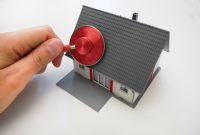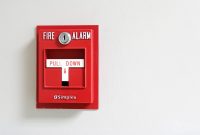First-time homebuyers often need to understand new terms and concepts. For example, you may hear the terms “Actual Cash Value” or “Guaranteed Replacement Cost” when you’re talking about home insurance. You might also come across the terms “Extended Replacement Cost” and “High-risk areas” when you’re talking about hazard insurance.
Actual Cash Value
Actual cash value insurance pays for the repairs or replacement of damaged or destroyed property. It differs from replacement cost insurance in that it doesn’t cover brand-new items and depreciation. It also provides limited coverage over replacement cost insurance because depreciation is factored in. It’s important to compare coverage levels carefully.
Actual cash value home insurance is a good option for homeowners on a tight budget. However, homeowners should be aware that actual cash value insurance payouts are lower than replacement cost. Usually, it is necessary to show that the damaged items were in good condition before they were damaged or destroyed. Otherwise, they will need to pay for the difference out-of-pocket.
In addition, Actual Cash Value coverage includes depreciation, which will decrease the value of an item over time. The insurance company will use math to determine what a new equivalent of an item would cost. It will also factor in any wear and tear.
Guaranteed Replacement Cost
If you live in an area prone to large-scale natural disasters, you may want to consider purchasing a policy with a guaranteed replacement cost endorsement. Although this can be a costly policy add-on, guaranteed replacement cost coverage is particularly useful in areas where costs of building materials and labor can increase substantially after a disaster.
This type of insurance will pay to rebuild a home up to the policy limit. It can be especially helpful if you have a very high-end home or live in an area with high risk of natural disasters. Many large insurers have caps on their guaranteed replacement cost policies, so it may be a good idea to choose a company that has no cap.
When it comes to home insurance, replacement cost is the most comprehensive coverage. This type of insurance will pay to repair or rebuild a home to a condition that was similar to it when the disaster occurred. However, it is important to note that there are many differences between guaranteed replacement cost. The former is generally more expensive than the latter. The latter takes into account the demolition costs, complexities of reconstruction, and codes in the affected area.
Extended Replacement Cost
Extended Replacement Cost of Hazard Insurance is a type of property insurance that allows you to rebuild your property in the event of a disaster. This type of insurance increases the stated limit on your policy to cover the full cost of rebuilding the damaged building. However, it is not available in every state and insurers may not offer this type of coverage. This type of insurance is also more expensive than the others.
This policy is worth the extra cost if you live in a high-risk area and are at risk of costly rebuilding. For instance, if a hurricane damages your home and you live in a high-risk area, the rebuilding costs can skyrocket. Fortunately, the Extended Replacement Cost of Hazard Insurance is designed to protect you against these rising costs.
Extended Replacement Cost of Hazard Insurance may seem like overkill, but it’s a necessity in some circumstances. For example, if your property has an unusually high value, it may be better to opt for the extended coverage. If you’re in an area that often suffers from natural disasters, this type of coverage will ensure that you can rebuild your property as soon as possible.
High-risk areas not covered by hazard insurance
The risk of natural disasters and crime can make certain areas more difficult to insure. These areas may have a higher premium or be excluded from coverage. Insurers may also consider certain characteristics of a home when determining its risk level. Some of these characteristics include the age of the home, the existence of dangerous dog breeds, and the home’s construction and materials.
When requesting a quote, insurance companies use a report called the CLUE. This report provides details about the risks associated with a property. This report can tell the insurance company whether you live in a high-risk area or not. This information will help the insurance company determine the cost of your policy.
If your home is in a high-risk area, it may be difficult to get hazard insurance, but you can still obtain protection from other sources. It is important to speak with your neighbors and contact local insurance agents for recommendations. It may be helpful to contact surplus carriers, which specialize in insuring high-risk homes. Such insurers tend to be more expensive than traditional carriers. You can also seek advice from the state insurance department. Its FAIR Plan program can help you obtain home insurance for a high-risk area.



